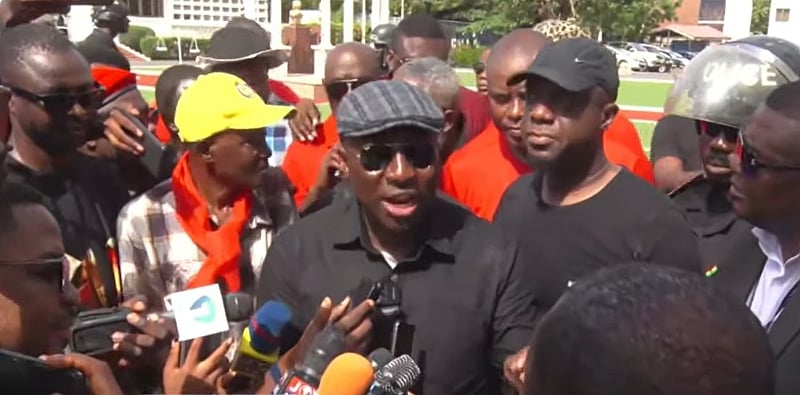The alleged assault incident involving Honourable Alexander Afenyo-Markin, the Minority Leader of Parliament, and a police officer has ignited a contentious public debate, raising questions about the conduct of both parties involved. The incident, purportedly occurring during a “Save the Judiciary” demonstration, has prompted an official investigation by the Ghana Police Service, seeking to unravel the conflicting narratives and establish the precise sequence of events that transpired. At the heart of the controversy lies the starkly contrasting accounts presented by the Member of Parliament and the police.
Afenyo-Markin vehemently denies the allegations of assaulting the police officer, Constable Forson, instead portraying himself as the victim of an unprovoked attack. He maintains that as he approached a barricade erected near Parliament House, Constable Forson, positioned behind the barricade, deliberately struck him in the chest with considerable force. The MP emphasizes the unexpected nature of the alleged assault, claiming he had no prior interaction with the officer and was simply attempting to access the parliamentary premises. He contends that the force of the blow left him momentarily stunned and requiring support to prevent collapsing.
The police, on the other hand, have summoned Afenyo-Markin for questioning, suggesting they possess evidence or testimonies that contradict his version of events. The details of the police account remain largely undisclosed, pending the outcome of their investigation. This lack of transparency further fuels public speculation and intensifies the demand for a thorough and impartial inquiry to ascertain the truth. The incident underscores the often-fraught relationship between law enforcement agencies and civilians, especially during public demonstrations. It highlights the importance of clear protocols and communication to prevent misunderstandings and escalate tensions.
The “Save the Judiciary” demonstration, serving as the backdrop for this alleged altercation, amplifies the complexity of the situation. The demonstration itself signifies a broader societal concern regarding the integrity and independence of the judicial system. The incident involving Afenyo-Markin, a prominent political figure, injects a layer of political significance into the already charged atmosphere. This confluence of factors necessitates a careful and nuanced investigation, ensuring that the findings are based on concrete evidence and not influenced by political considerations or public pressure.
The incident has drawn significant public attention, sparking diverse reactions and interpretations. Some observers express skepticism toward the MP’s account, citing the inherent power dynamics between a high-ranking political figure and a junior police officer. Others view the incident as a potential overreach of police authority, questioning the necessity of physical force, even if provoked. The public discourse surrounding the incident underscores the underlying tensions and mistrust that can exist between law enforcement and the communities they serve.
The ongoing investigation holds the key to clarifying the truth behind the conflicting narratives. A thorough and impartial inquiry, including witness testimonies, forensic evidence if available, and a review of any existing video footage, is crucial to determine the culpability or innocence of both parties involved. The outcome of the investigation will not only address the specific allegations but also potentially shape public perception of police conduct and accountability within the context of public demonstrations. It serves as a reminder of the delicate balance required to uphold the rule of law while respecting the rights of individuals, including public officials, during protests and demonstrations. The incident also highlights the importance of clear communication and de-escalation techniques for law enforcement officers interacting with the public, especially in potentially volatile situations.


